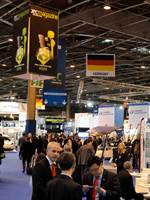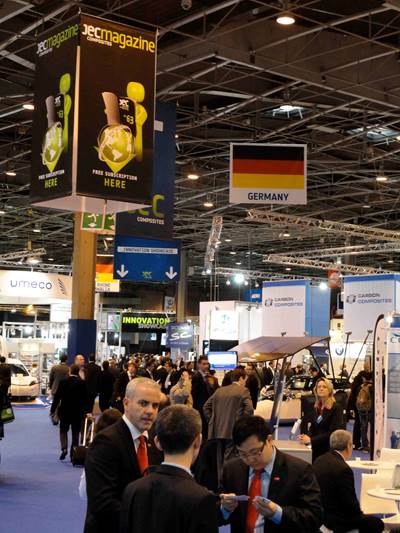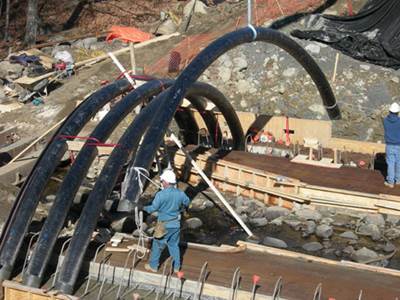Q&A: Manuel Torres Martinez
At the 2011 JEC Composites Show in Paris, CT had the opportunity to interview MTorres Group chairman Manuel Torres Martinez, excerpts from which appear here.
At the 2011 JEC Composites Show in Paris, CT had the opportunity to interview MTorres Group chairman Manuel Torres Martinez. Torres is an irrepressible individual with an optimistic and innovative outlook who is dedicated to research and development. Under his leadership, the MTorres Group is currently developing a constant speed water/wind turbine for renewable energy. Further, in February 2009, Gamesa Corporación Tecnológica (Bilbao, Spain) and MTorres Diseños Industriales began R&D efforts on what the two companies billed as “a new concept for wind turbine blade design” that will depend on an automated blade-manufacturing process. The project, anticipated to result in an investment of as much as €100 million ($144.5 million USD), targets a significant reduction in blade production cycle time, with accompanying reductions in unit manufacturing cost. The blade design is expected to reduce blade noise emissions and improve the cost-effectiveness of Gamesa turbines for the wind farm operator. This project is nearing fruition; a prototype of the design won this year’s JEC Innovation Award in the Wind Energy category at the recent JEC Composites Show (see our coverage of the MTorres/Gamesa blade and other JEC event news in "JEC Paris 2011 Review," under "Editor's Picks," at top right). The new blade could be in production by year’s end.
Q: Where do you see the greatest growth during the next 5 to 10 years in the composites industry, and how will those trends impact your business?
A: Apart from aerospace, which is a very important and growing market, I see big growth in the wind turbine industry, automotive and infrastructure repair and refurbishment, especially bridges. I think that dry fabrics and associated infusion technologies will see a lot of growth during this time period. As you know, we have an ongoing project with Gamesa in the renewable energy sector to test automated placement of dry reinforcing unidirectional fabrics for fabricating wind turbine blades. That project has given us the experience to jump back to the aerospace industry and apply it there as well. We’re working with this material technology because we believe it is going to be a future trend and we are trying to anticipate the future, which I also believe includes eliminating the autoclave. An oven is much cheaper, so that’s the way, in my opinion.
Q: Describe MTorres’ target customer and that customer’s market segment.
A: Clearly our primary customers have traditionally included a wide range of aeronautical firms and have typically been the large aerospace OEMs, such as Airbus and Boeing, and their primary Tier 1 suppliers, like Spirit AeroSystems. What we have begun to see is our equipment being purchased by firms further down the supply chain, including Tier 2 and perhaps even Tier 3 companies interested in supplying to the OEMs. I think that this is a common pattern, that the OEMs are sharing more cost and risk with their suppliers and outsourcing more work. These suppliers are experiencing more volume of business and need to automate. In other words, our customer list is expanding, and concurrently so is the accessibility to the technology, such as automation. We are “spreading out” the technology, I would say.
Q: You won a JEC Innovation Award, with Gamesa, for automating wind blade fabrication. What do you see as the impact of this technology on the wind industry?
A: Well, I would say that as renewable energy develops, the cost to produce a kilowatt of wind energy is coming closer and closer to the cost of other types of energy production. We’re moving to more efficient blades that are less expensive to produce. Our automated layup systems, such as that developed with Gamesa and for which we won the JEC award, are going to allow better blade quality and fewer failures through repeatability and consistency, and ultimately, then, a lower cost of energy. Plus, companies are working to develop better generators and lower the costs there as well, so the impact of the technology is higher quality and lower cost of energy.
The same can be said for automotive, aeronautics — it’s the same everywhere. That’s the life challenge, no? Any material, any process that allows automation to increase efficiency and reduce cost is the future.
As one example, in other countries such as the U.S. and Canada, there are a lot of older road bridges that need to be renewed — for instance, converting the support beams to composite material. This type of problem needs to be addressed like … a military campaign. By that, I mean the construction companies need to organize themselves into technological groups and operate like an army so that they can accomplish “rapid deployment” of the new bridge. It is crazy to close a road and a bridge for months at a time so that they can pour the concrete and so on. That sort of approach adds too much cost, such as more fuel consumption when the residents have to drive another route. So we have to have a sort of disciplined military philosophy to accomplish a composites bridge, coordinating all the groups, and complete it in just a few days. I see in the future a type of automated technology that will allow such lightweight bridge beams to be built on site, in place.
Q: Do you mean the type of technology such as that proposed by Dr. Habib Dagher of the University of Maine’s AEWC Advanced Structures and Composites Center [see "Bridge cost cut ...." under “Editor's Picks"], the “Bridge in a Backpack”?
A: Perhaps, and that is one interesting example. But what I am saying is that the technological companies like ours should not just precisely satisfy the market demands, we need to anticipate the market demands and find solutions to grow and create the demand. Don’t serve the existing solutions, but anticipate and provide the new solution. If you can’t do that, then you are not a real technological company. You need to solve the problems and provoke the demand for that solution, and you can’t be afraid of taking some risks.
Q: What sort of solutions do you offer the smaller composites manufacturer, on the Tier 2 or Tier 3 levels, who wants to consider automation?
A: If you are a big OEM, with a new, large program, basically you are going to distribute the work to several smaller companies. In some cases what we have done is create a common specification for the big company related to type of head, type of material, the design rules and so on, which helps reduce cost for the subcontractors. In other words, if a small subcontractor company were to buy a machine, with its own specifications and work package, etc., that machine would be more expensive. But if a group of companies is providing work to the large company, and we make one common specification so we can make the same machine for all of them that uses the same materials and the same processes and so on, the cost is lower. This is what we have done for Airbus; we are a supplier for several Tier 1 suppliers in many locations, and they’re working with a common specification. The commonality, or modularity, of the machine and its operation is one way to reduce the cost. It also helps to reduce items like maintenance, quality control and so on, since all suppliers are on the same page. It’s like buying a suit: if you get a custom-made suit, it’s going to cost more than a ready-to-wear suit [of similar quality] that’s available in a store for many customers. In the Airbus case, in the past, every Airbus plant in every country had its own specifications, so at some point they decided to standardize their processes to reduce costs and to distribute those specifications to their suppliers. In this way, more companies are also getting access to automated technology.
Q: How can the composites industry best increase its penetration into new market applications?
A: I see that the composites sector is very active, and that’s obvious here at the JEC show. I have seen many ingenious solutions here. There is a lot of talent and a lot of genius, from bicycles to cars to new materials; I think of it as a “boiling” of activity and talent. Our human society has a lot of problems, and it is up to all of us to address them. We at MTorres want to be part of the solutions to those problems. My message to your readers is that I have a lot of optimism for the future and that we’ll solve these problems.
Related Content
Plant tour: Albany Engineered Composites, Rochester, N.H., U.S.
Efficient, high-quality, well-controlled composites manufacturing at volume is the mantra for this 3D weaving specialist.
Read MoreLarge-format 3D printing enables toolless, rapid production for AUVs
Dive Technologies started by 3D printing prototypes of its composite autonomous underwater vehicles, but AM became the solution for customizable, toolless production.
Read MorePlant tour: Joby Aviation, Marina, Calif., U.S.
As the advanced air mobility market begins to take shape, market leader Joby Aviation works to industrialize composites manufacturing for its first-generation, composites-intensive, all-electric air taxi.
Read MoreSulapac introduces Sulapac Flow 1.7 to replace PLA, ABS and PP in FDM, FGF
Available as filament and granules for extrusion, new wood composite matches properties yet is compostable, eliminates microplastics and reduces carbon footprint.
Read MoreRead Next
JEC Paris 2011 Review
This annual Paris trade event’s statistics signal an advanced composites resurgence.
Read MoreBridge cost cut with inflatable arches
Stay-in-place composite formwork shortens installation, doubles service life of concrete bridge structure.
Read MoreCW’s 2024 Top Shops survey offers new approach to benchmarking
Respondents that complete the survey by April 30, 2024, have the chance to be recognized as an honoree.
Read More













.jpg;maxWidth=300;quality=90)











